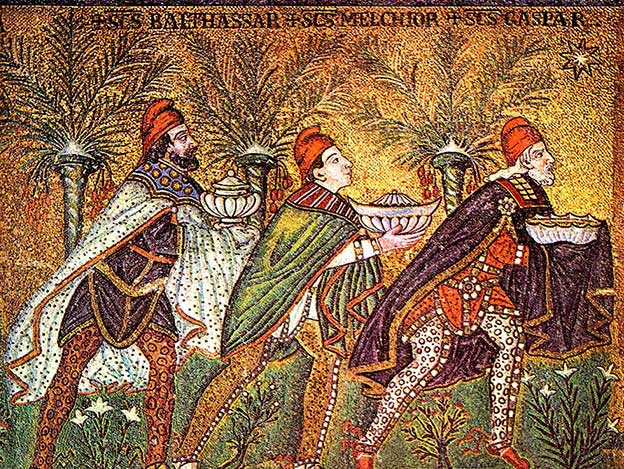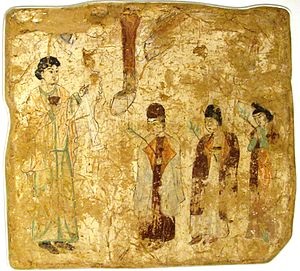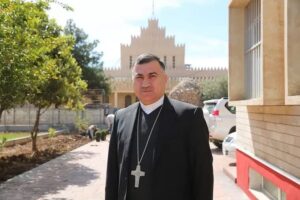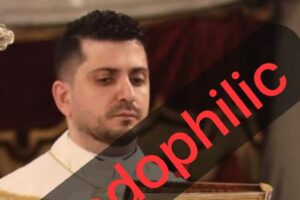
The Three Magi were from the Parthian Empire and for the first few centuries of the Christian Era, Christians were only welcome in the lands of the Parthians especially Abgar’s Chaldean and Arabic Christian Kingdom of Edessa having been targeted for conversion because of their own native traditions of descent from the lost Ten Tribes exiled to Central Eurasia by the Assyrians in the 720s BC. These Christians sent missions to Rome where thousands were martyred. However, the Sassanids who had succeeded the Parthians in Persia from 224 AD prove to be even worse enemies to the Christians and many more were martyred there. Eventually the Parthians of Armenia made Christianity into the official religion of their Kingdom in 301 AD and Rome copied this example in 380 AD. Meanwhile the Parthian Church in Sassanian Persia was forced to evolve into the Persian Church of the East starting with the 424 AD Synod of Dadyeshu.
Nevertheless, the Alevi Christians of the Parthian Church survived on the boarders of the Sassanid empire especially in Alania (Caucasian Albania: modern day Azerbaijan & Dagestan) until the Arab invasions corrupted Alevi Christianity into Ishmailism. Nevertheless, Great progress had been by Alevis made spreading Parthian Christianity among the Turco-Mongols who would preserve primitive forms of Alevism. In China they survived as the Hui but since the Communist revolution there has been a continual effort to convert the Hui into Sunnis and indeed that is how they are most commonly described. Others made a name for themselves in Europe briefly as Kara-Khazars in the 830s AD. In Crimea they seem to have Judaized into the Karaims. Kerait (ܟܹܪܝܼܬ) is the name given to Alevis whose Kara-Khazar ancestors once occupied Greater Kirgizia. In pre-Bolshevik Turkic they were called Karaylar (كرايلر). They exist today as a minority among people of Karakalpak, Karachay-Balkar, Karaim, Kara-Tatar, and other Kipchak heritages such as Bashkirs, Kazakhs and of course Kirghiz. Their name may derive from a Mongolic word Khereis meaning Cross. Modern Mongolian descendants are called Хэрэйд.

Around 1000 AD the leader of one such group of Alevis was saved from death while hunting by vision of Saint Sergius saying that he should join the Church of the East. He contacted the Bishop of Merv (Mary) and he brought 200,000 of his people with the approval of the Patriarch of Kokhe into communion with the Church of the East under Metropolitan Abd Isho of Mary (Mari in modern day east Turkmenistan).
Because of their pastoral diet of Milk and Meat they were granted permission by Patriarch Yohannan V to abstain only from Meat during fasting times and were allowed to continue eating some kinds of Dairy products. The Russian Orthodox referred to such people as “Molokan” meaning Milk-eaters and this is the name their descendants are still known as even today.
They returned to Europe with the Tatar armies led by Batu Khan and Mongke Khan settling in the Rus’ Daniel’s Kingdom of Halychyna (Carpathian Galicia) and Crimea in 1246 AD.
From the 1380s onward, many more sought refuge in Christendom under the leadership of Tokhtamysh as a result of the Ming conquest of Karakorum and of the Timurid “Jihad” in Central Eurasia which isolated them from (and caused them to loose contact with) their Mother Church of the East. After Timurlane decimated the Church of the East Hierarchy in Central Eurasia, the Molokans were left without any priesthood and after the schism of 1552 were absorbed into the Old Rite Church of Kiev and All Rus’ which formalized relations with Rome at the 1595 Union of Brest. Some Molokans were not keen to join the Roman Communion and after the hardcore Reformation (Raskol) of Nikkon in 1653, the dissenting Molokans had no choice but to continue independently first as a kind of Bezpopovtsi, evolving into what are defined as Spiritual Christians otherwise known as Eastern Protestants.
Without any apostolic succession of their own, many either turned to other forms of Catholicism or towards Sufism or became Spiritual Christian Judaizers to be known as Karaite-Subbotniks. As such many have since become citizens of Israel. The remainder restored their own primitive “Molokan” form of Christianity guided by members of a Khan family and although a massive Judaization took place among them in the 1800s some Subbotniks who had Judaized to Karaimism have managed to continue the efforts of Ilya Kazas and Seraya Shapshal to de-Judaize their heritage and return to Kerait-Turkic Alevism being their own ancient and native Kerait form of so-called “Molokan” Christianity.
Despite such attempts to revive the Old Turkic customs, most descendants of the Keraites these days are either somewhere in the Roman Communion, Islam, Orthodoxy or atheism. A few have also followed the path of Tobias “Levi” Babovich an infamous Crimean “Karait” who in the early 20th Century established his own “Karaite” form of Judaism based upon Sadducee principles which enjoys a world-wide non-Kerait following of more than 25,000 who while deriding traditional Keraite heritage, ironically call themselves “Karaite Jews” nevertheless.
A small group of Alevis in the Bulgarian Orthodox Church has been seeking communion with Rome through either the Rusyn Church or Chaldean Church but little progress has been made.
Iosyp Kazas
















